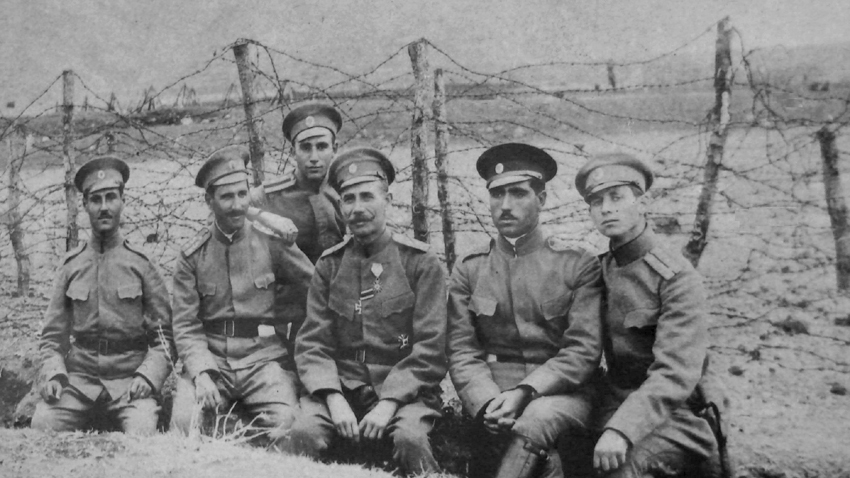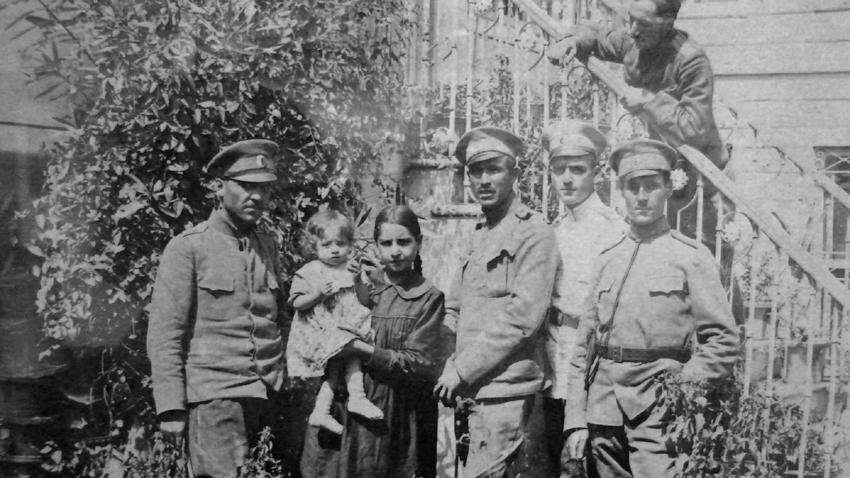An exhibition, devoted to the centenary of WW I is on at the National Palace of Culture Art Gallery until November 25. The exhibition features 45 photographs that have never been shown before, capturing moments from the everyday life of officers and soldiers from the 55th infantry regiment of the 10th Aegean Division. The exposition has been compiled by prominent Bulgarian photographer Ivo Hadjimishev.
“Ironically, my grandfather, diplomat Pancho Hadjimishev was in London in that fatal year, 1914, when it was still unclear whose side Bulgaria would take in the war. Of course, it had its reasons”, Hadjimishev says in an interview for Radio Bulgaria. “But his reports written from London reveal the efforts he was making, as well as the efforts of Bulgarian diplomacy as a whole. It had the onerous task of attracting the attention of the Great Powers involved in the conflict – a task that was really difficult for a small country, exhausted by the previous two wars.”
In 1912 – 1913 this country got involved in the two Balkan Wars with the idea of uniting its territories, inhabited mostly by Bulgarians but left outside its bounds. Involvement in WW I pursued the same goal, but the end was just as tragic. The exhibition is organized by the National Art Gallery and the Voevod Russi Slavov Thracian Society, Plovdiv, in partnership with the Ministry of Culture. The Society is chaired by Major-General Nonka Matova – she holds 11 world rifle shooting records and was vice champion at the 1992 Barcelona Olympics.

The pictures in the exposition are from three officers' albums.
“When they came into my hands they were in a really poor condition,” Ivo Hadjimishev says. “The management of the National Art Gallery wasn’t sure that the photographs could be restored. I have been working as a gallery volunteer in the area of photography for over a decade. They asked me whether an exhibition of these photographs was possible. That was how I met Mrs. Matova. She taught me about the lock of a rifle and the range of the bullet. At the same time we started looking at these faded, practically invisible photos. I restored them, trying to preserve their spirit. I had to restore human faces, to clean up blotches, to fill in the missing parts etc. What makes the collection really precious is the fact that the photographs were taken from albums belonging to ordinary men taking part in the war, who had their pictures taken just like that…”
According to Ivo Hadjimishev there are photos, taken by professionals in the whole bunch, but some of the officers also did photography. “They illustrate the mood and the spirit of those places,” the photographer goes on to say. “The horrors of war are also there to be seen as is the ruination it brought. The most powerful image is of a group of men from the labour corps, digging a common grave for soldiers. The man, who took the photo, wrote under it: “The frontline. Why?” This is what this exhibition is all about.”

What are the conclusions regarding our nation’s psychology that can be drawn from the exposition? Here is what historian Prof. Svetlozar Eldarov, who wrote some of the texts attached, says: “The photos illustrating the everyday life of soldiers show that the average Bulgarian is the same at war as he is at home. He works hard, he has fun with his comrades and takes pleasure in nature… He treats prisoners of war as brothers in distress – the way he himself would like to be treated. Far from home, Bulgarians would make a home out of a trench and would live there with the thought of their family…”
English version: Zhivko Stanchev
Photos: courtesy of the organizers of the exhibitionOn the second day after Easter begins Bright Week. It is so called because of the light that Christ's Resurrection brings to the world. According to Orthodox tradition, it is a time when the Holy Apostles and the Virgin Mary are glorified. Bright Week..
Patriarch Daniil celebrated a divine service for the so-called Second Resurrection of Christ in the Sofia-based church of Saint Nedelya. Patriarch Daniil greets Bulgarians with “Christ is Risen” At the festive liturgy, texts from the Gospel..
Patriarch Danil of Bulgaria, Metropolitan of Sofia, greeted the faithful with the joyful words "Christ is risen!" In his Easter message, he called on Orthodox Christians to share the extraordinary joy of heaven with the world through a life of light and..
On the second day after Easter begins Bright Week. It is so called because of the light that Christ's Resurrection brings to the world. According to..

+359 2 9336 661
